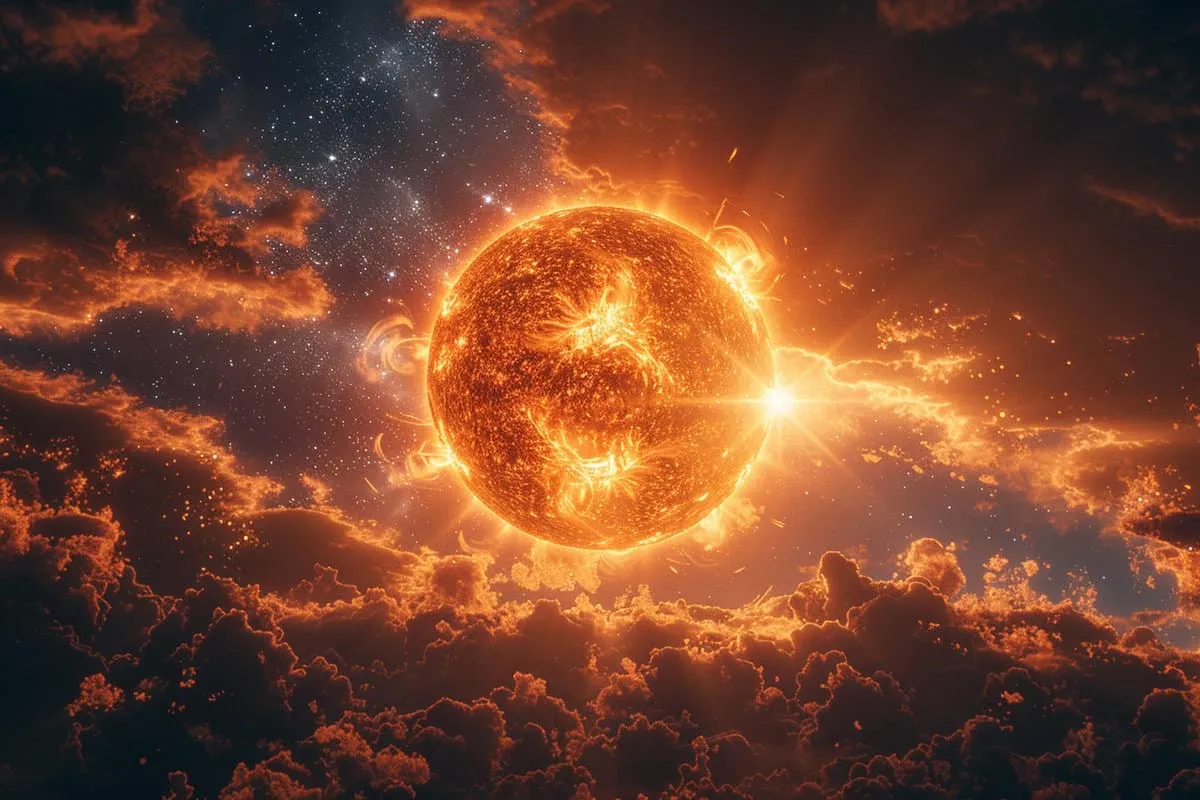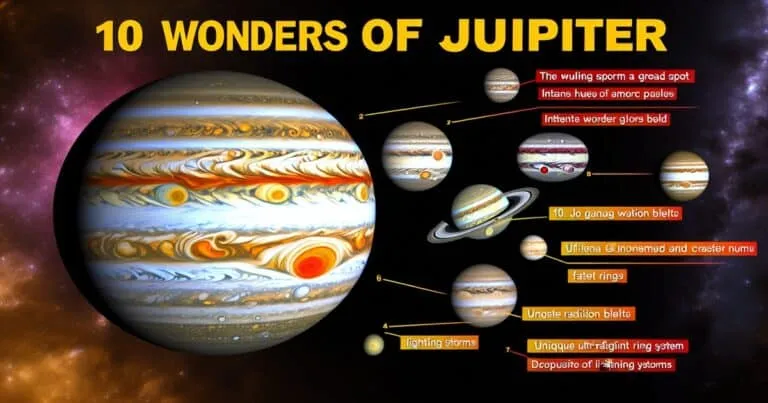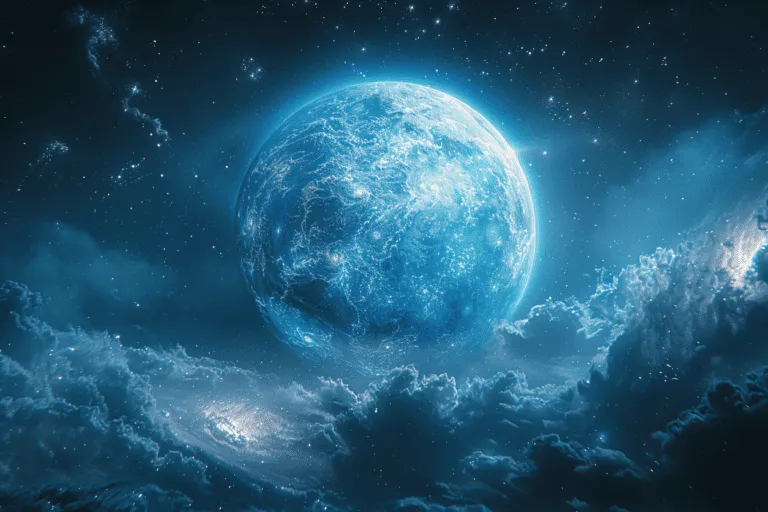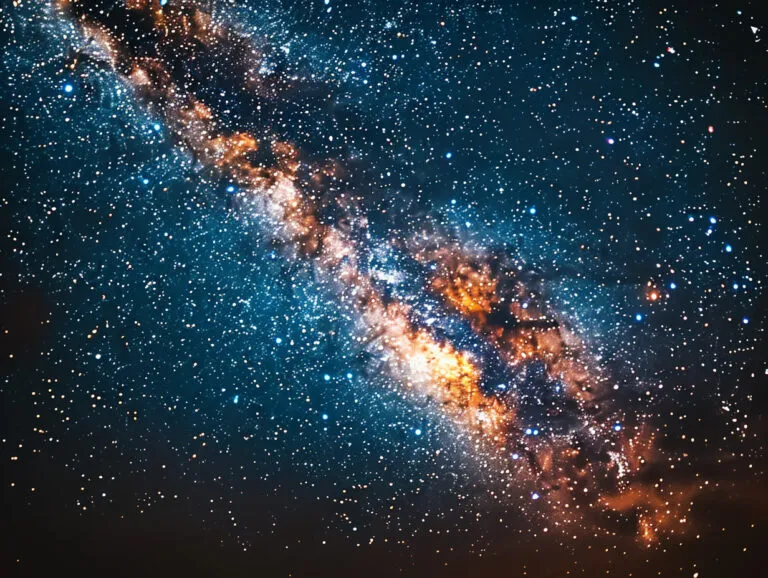10 Planet Mercury Facts (Top Intriguing Insights)
Mercury might seem like just another twinkling light in our vast sky, but it’s actually bursting with secrets and surprises. As the closest planet to the Sun, its swift orbit and tiny size pack a punch in terms of intriguing facts that defy our Earth-bound expectations.
From extreme temperatures to a day longer than its year, Mercury is anything but ordinary. If you thought space was all about stars and black holes, wait until you dive into these astonishing tidbits about this enigmatic world.
Ready for a cosmic journey? Scroll down as we reveal our top picks of mind-blowing Mercury facts.
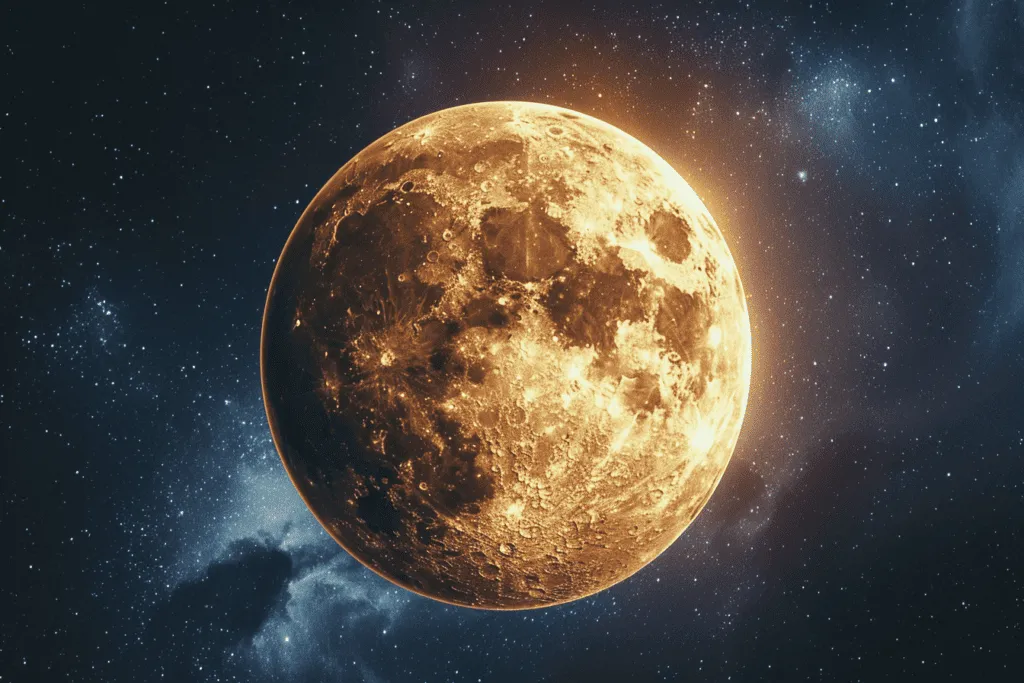
1. Closest Planet to the Sun
Mercury, our solar system’s closest planet to the Sun, orbits just 36 million miles away from it. This proximity means Mercury experiences more solar gravity than any other planet in our solar system.
Imagine being pulled closer to the Sun; that’s what happens to Mercury all the time.
Because of this closeness, Mercury receives up to 11 times more sunlight than Earth does. If you think summers on Earth are hot, imagine how scorching it would be on Mercury!
The intense sunlight and proximity make Mercury a world of extremes.
But here’s something fascinating: despite being so close to the Sun, temperatures can swing wildly on Mercury. During the day, it can get hotter than an oven, but at night, without an atmosphere like Earth’s to hold in heat, temperatures plummet.
Astronomers find this tiny planet intriguing because its orbit is much quicker due to its closeness to the Sun. A year on Mercury (the time it takes for one complete orbit around the Sun) is just 88 earth days long! That means if you lived on Mercury, you’d have a birthday almost every three months!
2. Mercury’s Extreme Temperature Fluctuations
Mercury experiences the most extreme temperature changes of any planet in our Solar System. During the day, temperatures on Mercury can skyrocket to 800°F (430°C). Imagine stepping out into such heat; it’s hot enough to melt lead!
But when night falls, Mercury tells a different story. The temperature dramatically drops to -290°F (-180°C), which is colder than the coldest winter night you’ve ever experienced.
This drastic change happens because Mercury has no atmosphere like Earth’s to keep some of the Sun’s warmth during the night.
This massive swing between scorching days and freezing nights makes Mercury a place of extremes. It holds the record for having the most significant temperature variation in our Solar System.
Why does this happen? Well, conditions on Mercury are unique because it’s so close to the Sun and yet rotates very slowly compared to Earth. This slow rotation means that one side faces the sun for a long time getting very hot while another part stays dark and cold.
Understanding these fluctuations helps scientists learn more about not just Mercury but other planets too. It teaches us about what conditions might be necessary for life or how weather works on other worlds.
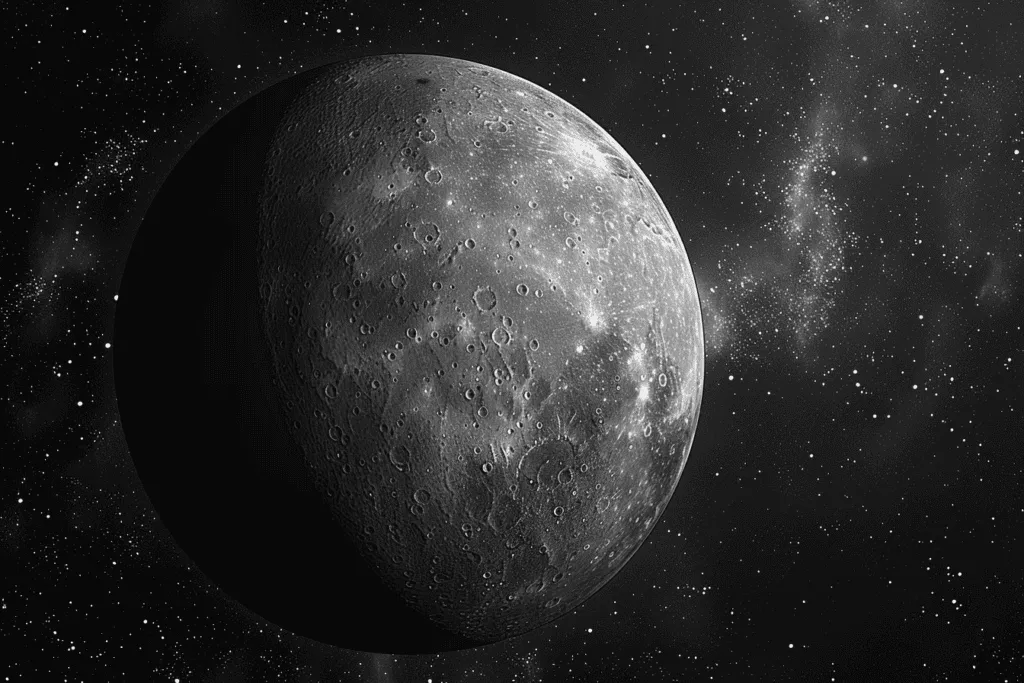
3. Shortest Orbit Around the Sun
Mercury, our Solar System’s smallest planet, holds a record that might surprise you. It completes a full orbit around the Sun in just 88 Earth days. Imagine celebrating your birthday almost four times in a year!
This makes Mercury the fastest orbiting planet among its celestial neighbors.
Each year on Mercury is less than a quarter of an Earth year. To put this into perspective, if you lived on Mercury, you would have celebrated over 100 birthdays by the time you turned 25 on Earth!
This rapid journey around the Sun is due to its close proximity to our star, which also results in extreme solar radiation and significant temperature fluctuations.
The speed at which Mercury orbits brings about fascinating phenomena regarding length of day and seasons compared to what we experience here on Earth.
Despite its speedy orbit, one day-night cycle on Mercury lasts as long as two-thirds of an Earth year because of its slow rotation relative to how fast it travels around the Sun.
4. Mercury Has a Molten Core
Mercury’s core is a hot topic, quite literally! It’s composed mostly of iron, which accounts for about 60% of its mass. This heavy metal presence is crucial to understanding Mercury as a planet.
What makes this core fascinating is its molten state. Unlike the solid cores of some other planets, Mercury’s heart beats with liquid iron.
This fluidity plays a significant role in creating the planet’s magnetic field, though it’s much weaker compared to Earth’s.
The existence of this molten core and the generated magnetic field are interconnected. The movement of the liquid iron within generates what we call a dynamo effect. This effect is responsible for Mercury’s slight but present magnetic field.
Interestingly, despite being so close to the Sun, this small planet can maintain such an internal structure. It challenges our understanding and opens up more questions about planetary formation and dynamics.
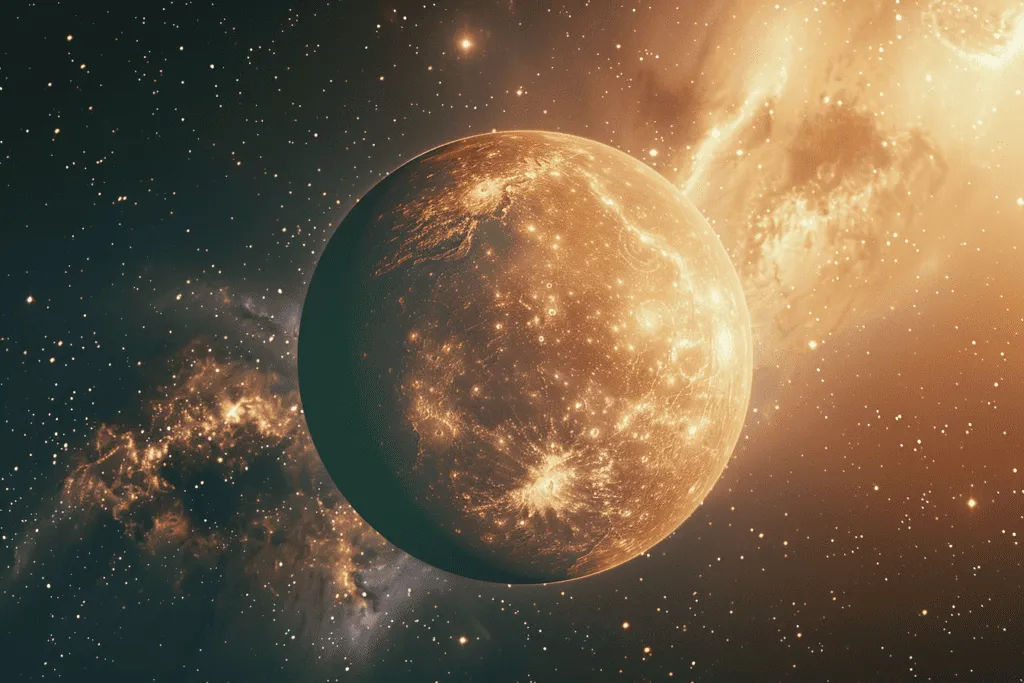
5. The Planet with the Smallest Tilt
Mercury stands out in our solar system because it barely leans to one side as it travels around the sun. Its axis tilt is less than 1/30th of Earth’s. Imagine a spinning top that’s almost perfectly upright; that’s Mercury for you.
This tiny tilt means Mercury doesn’t really have seasons like we do on Earth. On our planet, the changing angles of sunlight throughout the year give us spring, summer, fall, and winter. But on Mercury, this just doesn’t happen because its tilt is so minimal.
Because of its small axial tilt, sunlight distribution on Mercury’s surface is pretty uniform. This means some areas are always in bright light while others are perpetually dark and cold.
Think about standing in one spot where the sun never sets or rises; that would be your experience near Mercury’s poles.
However, don’t let this fool you into thinking it’s all sunshine and daylight everywhere on Mercury! Some parts of its ground remain hidden from the sun at certain times due to craters and other geographical features creating shadows.
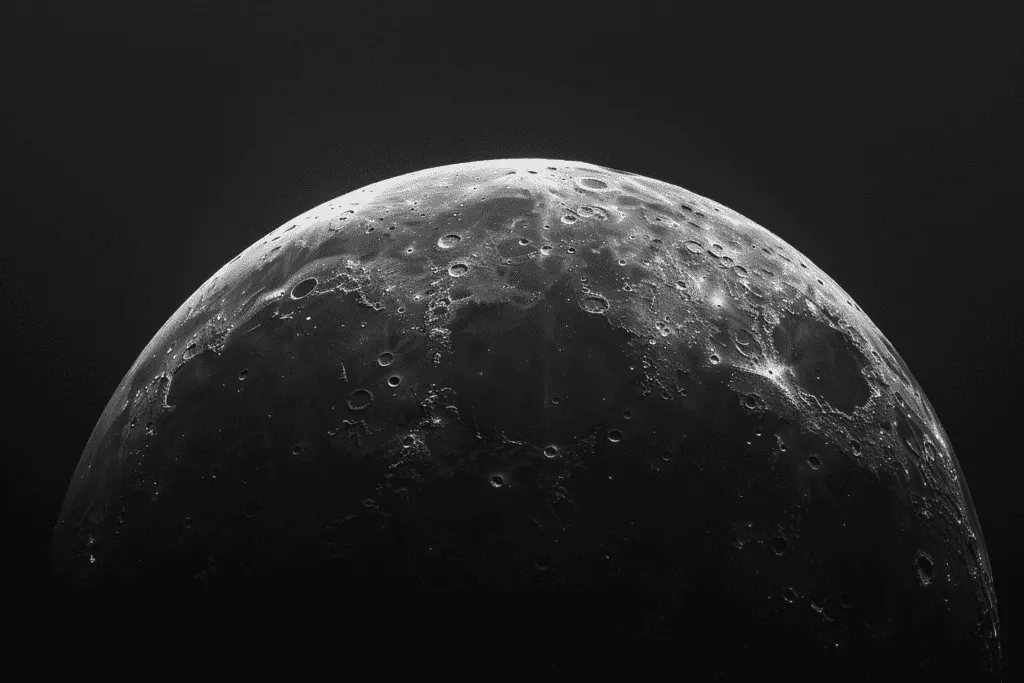
6. Mercury’s Cratered Surface Resembles the Moon
Mercury may look a lot like our moon at first glance. This similarity comes from its surface being covered in thousands of craters. These craters are scars from long-ago collisions with comets and asteroids.
The largest among these is the Caloris Basin, which spans about 1,550 km (about 963 miles) across. To put that into perspective, it’s big enough to fit a small country inside!
One key reason Mercury’s face remains so scarred is its lack of atmosphere. On Earth, weathering and erosion over time change our landscape – but on Mercury, there’s no air to help erode or smooth things out.
This means that once a crater forms, it can stay unchanged for millions of years.
Imagine stepping onto Mercury’s surface; you’d be walking through history frozen in time! Each step could take you over marks left behind billions of years ago.
7. Lack of Atmosphere Leads to Sky-Filled Stars Even in Daylight
Mercury’s sky is unlike anything we have on Earth. The planet has a very thin exosphere, which means it barely has what we’d call an atmosphere. This thin layer doesn’t block sunlight or starlight like our thick atmosphere does.
Because of this, if you stood on Mercury during the day, you could see stars and planets shining in the sky alongside the sun. It’s a stunning sight that no one on Earth can experience without special equipment.
The absence of a substantial atmosphere also means there are no weather patterns on Mercury. You won’t find clouds or storms here; just smooth plains under a constant celestial show.
Imagine looking up at noon and seeing not only the sun but also stars twinkling back at you, unaffected by daylight. This phenomenon happens because there’s nothing significant in Mercury’s skies to scatter sunlight or dim the glow of distant stars.
Days on Mercury are extreme with temperatures soaring, but despite this harshness, its lack of atmosphere gifts us with one of the most beautiful natural spectacles – a daytime star-filled sky.
8. Presence of Water Ice in Shadowed Craters
Mercury might seem like the last place you’d find ice, given its close proximity to the Sun and scorching daytime temperatures. However, scientists have discovered water ice in some unexpected places on this tiny planet.
At both Mercury’s north and south poles, there are craters that never see sunlight. These permanently shadowed regions are cold enough to trap water ice for possibly millions of years. Despite the extreme surface temperatures elsewhere on Mercury, these special spots stay chilly.
How did the ice get there? It’s believed that comets or asteroids carrying water crashed into Mercury over time. When they hit these shadowy areas, the water didn’t evaporate but instead froze into ice.
This discovery is not just cool; it’s crucial. It shows us how even in the most unlikely environments, water can exist if conditions are right. This could have big implications for our search for life beyond Earth.
9. Mercury’s Weird Orbit: The 3:2 Spin-Orbit Resonance
Mercury has a very unusual way of moving around the Sun. It spins around on its axis three times for every two trips it makes around the Sun. This odd dance between spinning and orbiting is called a 3:2 spin-orbit resonance.
Because of this special pattern, one day on Mercury (from sunrise to sunrise) is not like a day here on Earth. In fact, it lasts as long as two years on Mercury!
This unique movement also creates something really cool called the double sunrise effect at some places on Mercury. Here’s how it works:
- First, you see the Sun rise in the sky.
- Then, because of how Mercury moves and spins, it looks like the Sun stops and goes back down a little bit.
- But then, it rises again before setting for good.
It’s like getting two sunrises in one Mercurian day! This doesn’t happen everywhere on Mercury but only in certain spots because of its weird orbit.
10. Named After the Roman Messenger God
Mercury zips around the Sun faster than any other planet, completing its orbit in just about 88 days. This incredible speed is why it was named after the Roman messenger god, Mercury.
Known for his swift movements and ability to communicate quickly, Mercury’s characteristics are perfectly mirrored by the planet’s rapid journey through space.
The connection between Mercury and its namesake goes deeper than just speed. Just like the god who could move swiftly and elusively among the gods, the planet Mercury is tricky to spot in our sky. It appears only briefly at dawn or dusk, close to where the Sun rises or sets.
Mercury stands out as unique in our solar system for another reason too – it’s the only planet named specifically after a Roman deity known for mobility and communication.
This naming convention ties back centuries ago when astronomers were deeply influenced by Roman mythology in their study of celestial bodies.
Frequently Asked Questions
Why is Mercury the closest planet to the Sun?
Mercury snags the title of being the Sun’s nearest neighbor due to its cozy orbit, a mere 36 million miles away. It’s like living next door to a star!
How extreme are temperature fluctuations on Mercury?
On Mercury, temperatures swing wildly from scorching hot at 800°F during the day to freezing cold at -290°F at night. Imagine needing sunscreen and a winter coat in the same day!
What makes Mercury’s orbit around the Sun unique?
Mercury speeds around the Sun in just 88 days, making it an Olympic sprinter in terms of orbits. It’s got no time to waste!
Is there water on Mercury?
Yes, surprisingly! Water ice hides out in shadowy craters where sunlight dares not reach. It’s like finding an oasis in a desert.
What’s up with Mercury’s weird orbit pattern?
Mercury dances in a special 3:2 spin-orbit resonance; for every two times it spins on its axis, it circles the Sun three times. Think of it as waltzing through space.
Why does Mercury have so many craters?
Without much atmosphere to protect it, meteoroids slam into Mercury unchecked, leaving behind crater scars similar to acne marks after puberty hits hard.
Can you see stars from Mercury during daylight?
Absolutely! With hardly any atmosphere to speak of, daytime sky-gazers can spot stars twinkling. They can see them even when the sun is shining bright above them.


